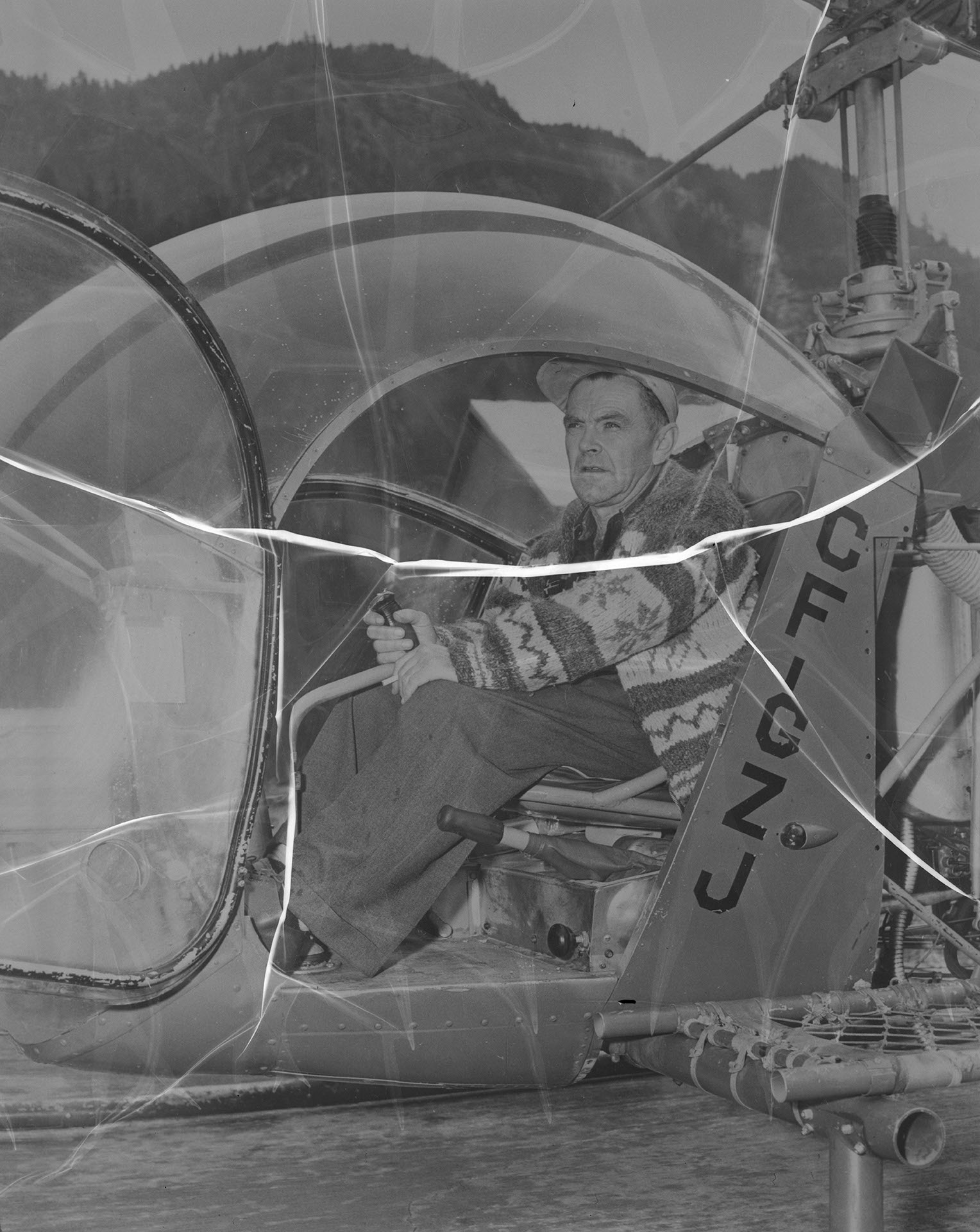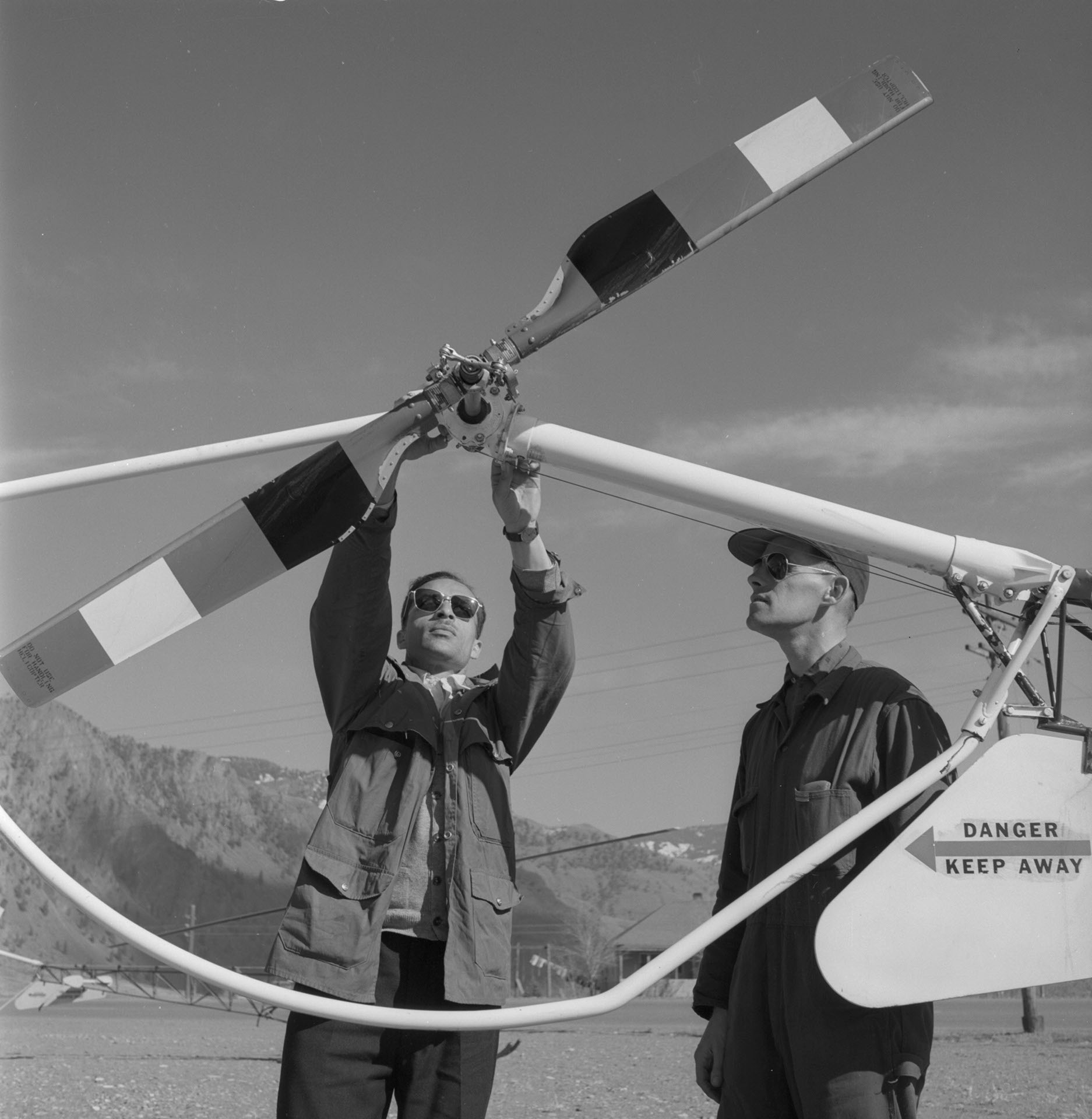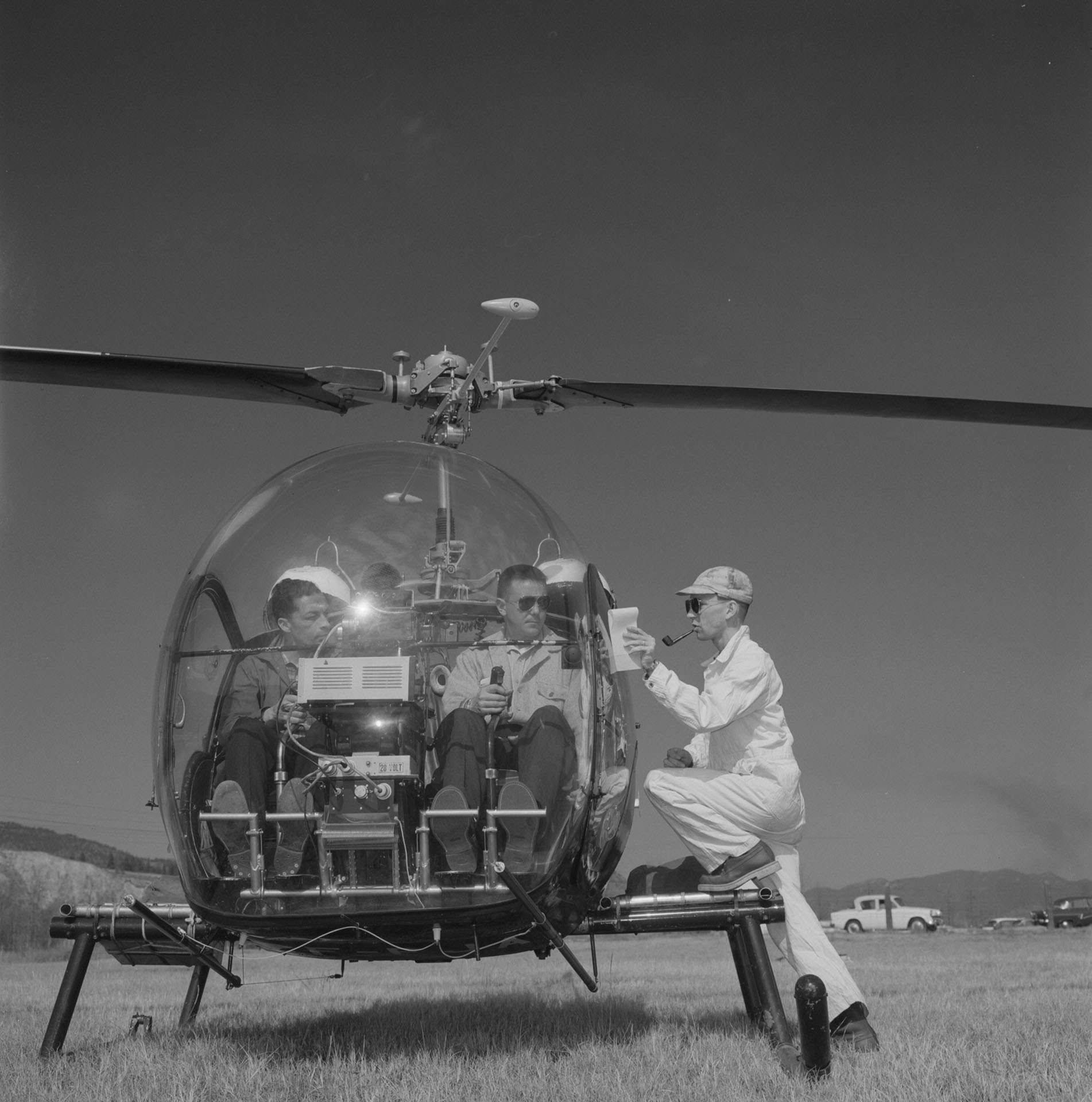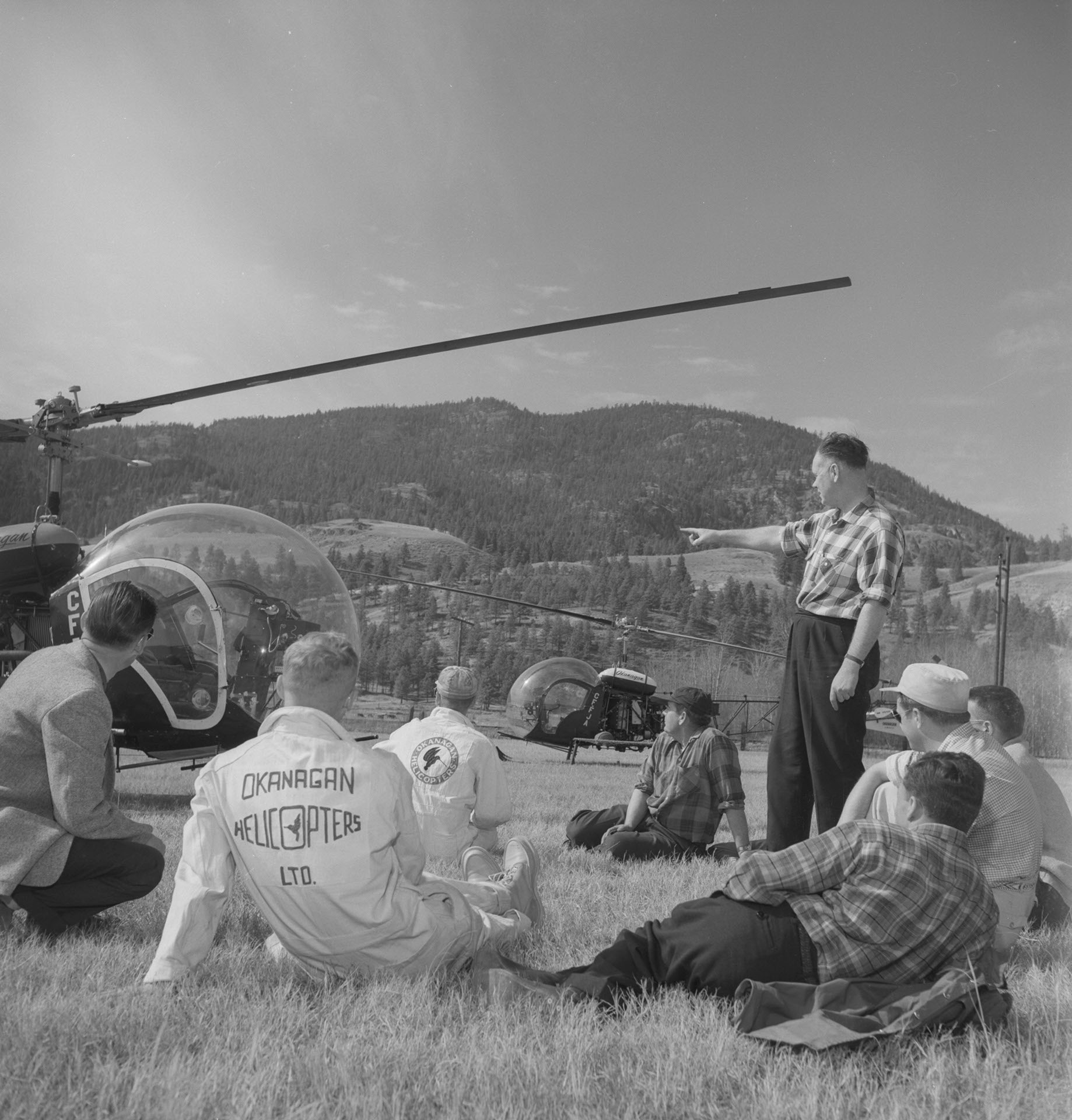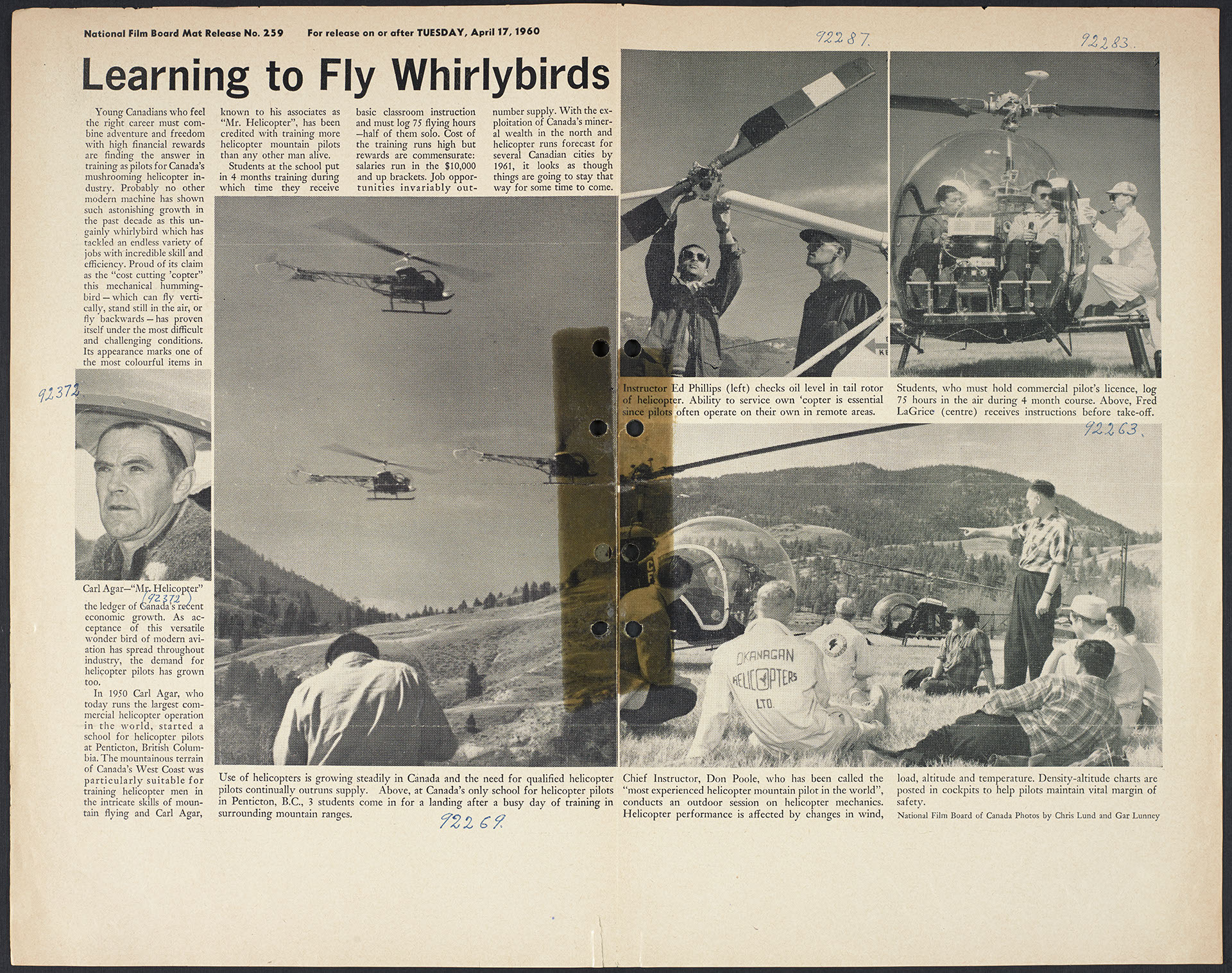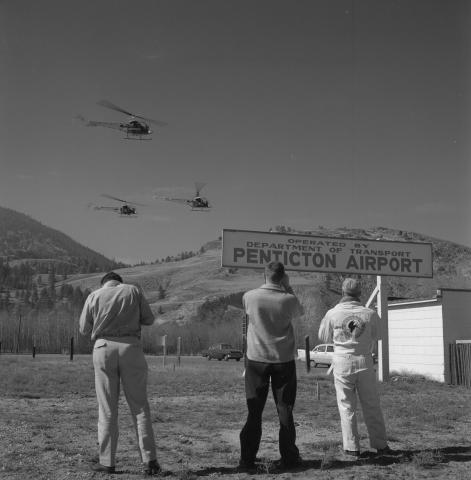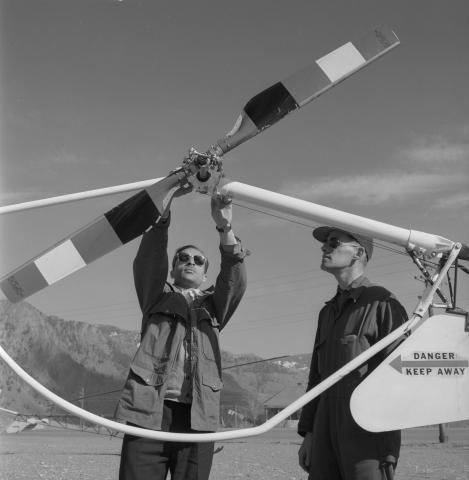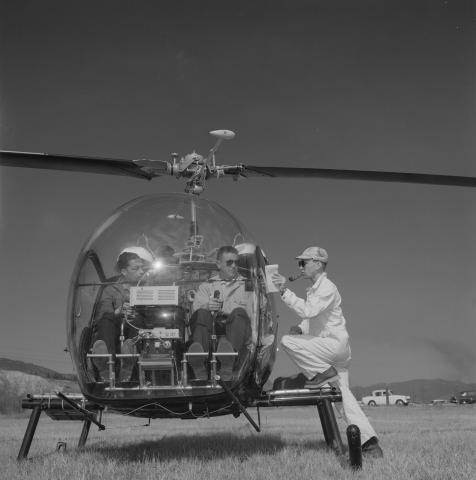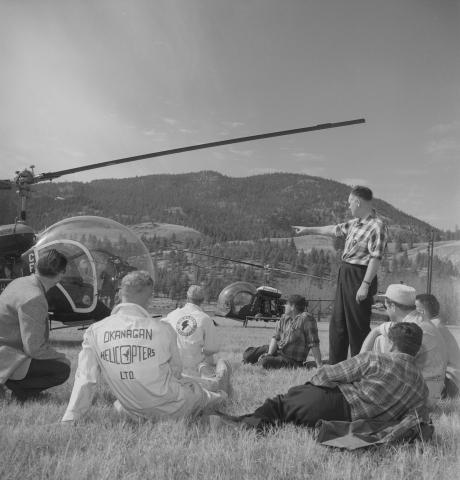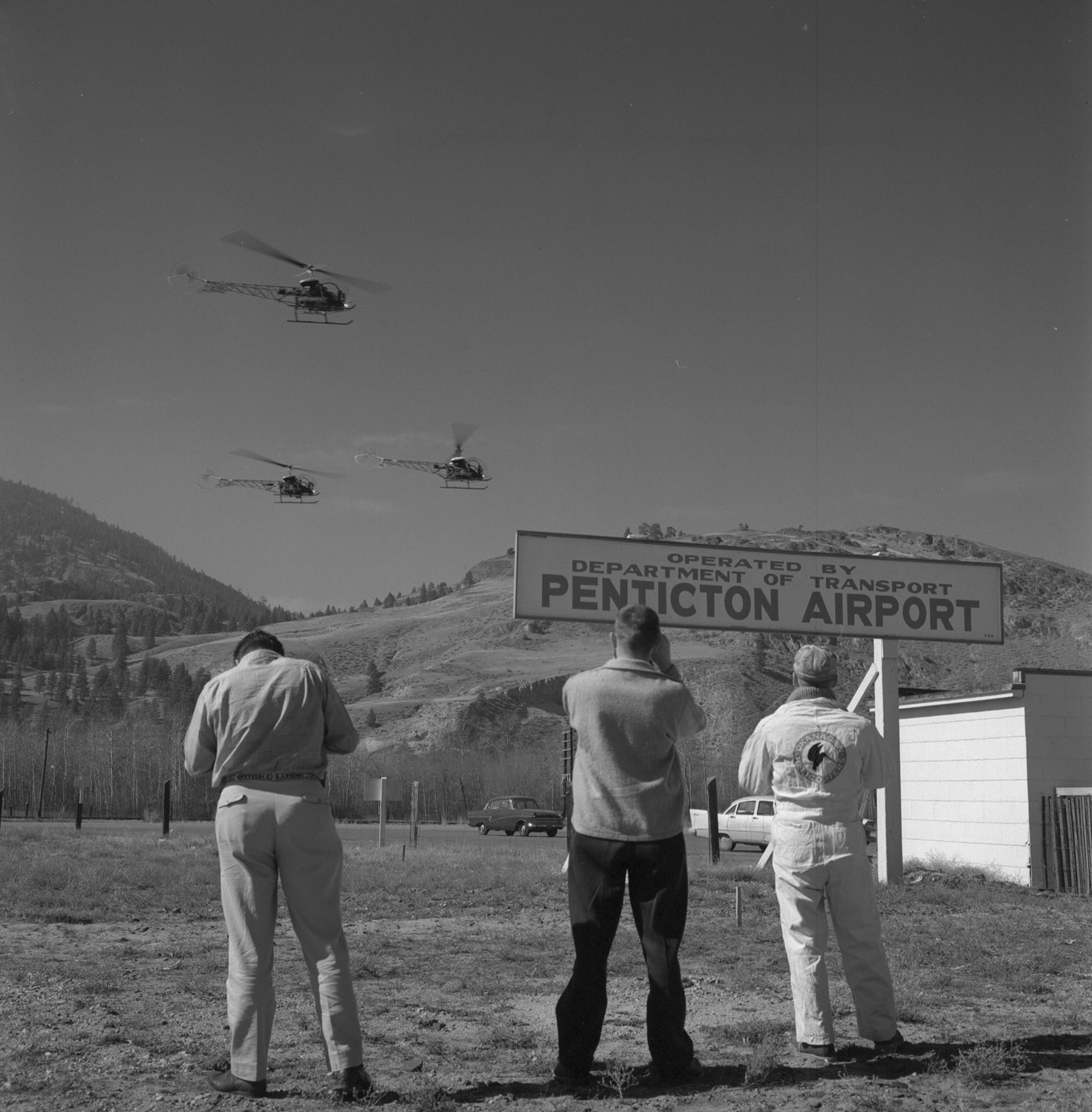
Photostory #259: Learning to Fly Whirlybirds
Photographers
,
Maker
National Film Board of Canada
Release Date
April 17, 1960
Collection
CMCP fonds
Credit Line
Canadian Museum of Contemporary Photography fonds, National Gallery of Canada Library and Archives
Main Text
Young Canadians who feel the right career must combine adventure and freedom with high financial rewards are finding the answer in training as pilots for Canada's mushrooming helicopter industry. Probably no other modern machine has shown such astonishing growth in the past decade as this ungainly whirlybird which has tackled an endless variety of jobs with incredible skill and efficiency. Proud of its claim as the "cost cutting 'copter" this mechanical humming-bird -- which can fly vertically, stand still in the air, or fly backwards -- has proven itself under the most difficult and challenging conditions. Its appearance marks one of the most colourful items in the ledger of Canada's recent economic growth. As acceptance of this versatile wonder bird of modern aviation has spread throughout industry, the demand for helicopter pilots has grown too. In 1950 Carl Agar, who today runs the largest commercial helicopter operation in the world, started a school for helicopter pilots at Penticton. British Columbia. The mountainous terrain of Canada's West Coast was particularly suitable for training helicopter men in the intricate skills of mountain flying and Carl Agar, known to his associates as "Mr. Helicopter", has been credited with training more helicopter mountain pilots than any other man alive. Students at the school put in 4 months training during which time they receive basic classroom instruction and must log 75 flying hours -- half of them solo. Cost of the training runs high but rewards are commensurate: salaries run in the $10,000 and up brackets. Job opportunities invariably outnumber supply. With the exploitation of Canada's mineral wealth in the north and helicopter runs forecast for several Canadian cities by 1961, it looks as though things are going to stay that way for some time to come.
Subjects:
Locations:

